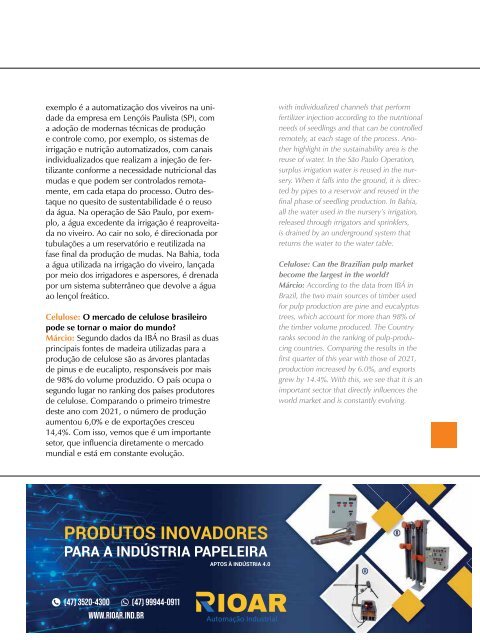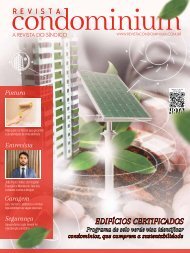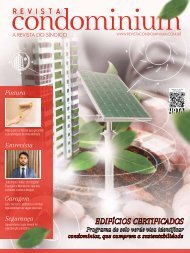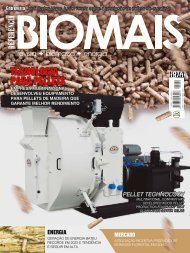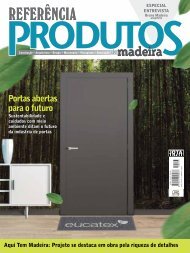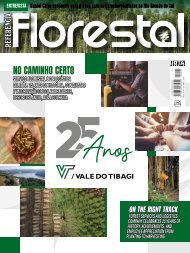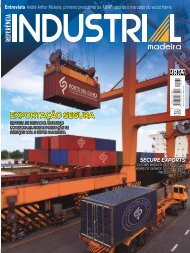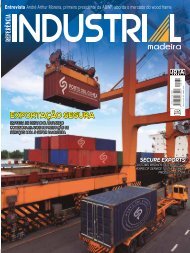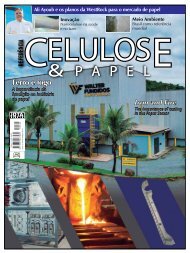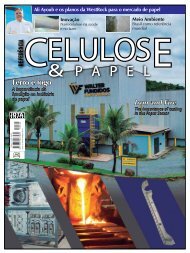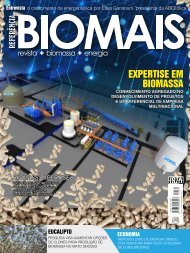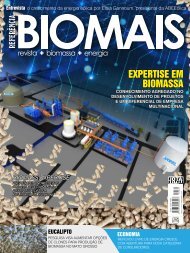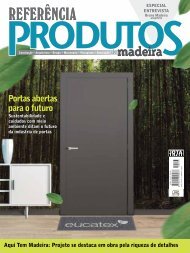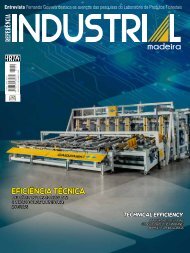Create successful ePaper yourself
Turn your PDF publications into a flip-book with our unique Google optimized e-Paper software.
exemplo é a automatização dos viveiros na unidade<br />
da empresa em Lençóis Paulista (SP), com<br />
a adoção de modernas técnicas de produção<br />
e controle como, por exemplo, os sistemas de<br />
irrigação e nutrição automatizados, com canais<br />
individualizados que realizam a injeção de fertilizante<br />
conforme a necessidade nutricional das<br />
mudas e que podem ser controlados remotamente,<br />
em cada etapa do processo. Outro destaque<br />
no quesito de sustentabilidade é o reuso<br />
da água. Na operação de São Paulo, por exemplo,<br />
a água excedente da irrigação é reaproveitada<br />
no viveiro. Ao cair no solo, é direcionada por<br />
tubulações a um reservatório e reutilizada na<br />
fase final da produção de mudas. Na Bahia, toda<br />
a água utilizada na irrigação do viveiro, lançada<br />
por meio dos irrigadores e aspersores, é drenada<br />
por um sistema subterrâneo que devolve a água<br />
ao lençol freático.<br />
<strong>Celulose</strong>: O mercado de celulose brasileiro<br />
pode se tornar o maior do mundo?<br />
Márcio: Segundo dados da IBÁ no Brasil as duas<br />
principais fontes de madeira utilizadas para a<br />
produção de celulose são as árvores plantadas<br />
de pinus e de eucalipto, responsáveis por mais<br />
de 98% do volume produzido. O país ocupa o<br />
segundo lugar no ranking dos países produtores<br />
de celulose. Comparando o primeiro trimestre<br />
deste ano com 2021, o número de produção<br />
aumentou 6,0% e de exportações cresceu<br />
14,4%. Com isso, vemos que é um importante<br />
setor, que influencia diretamente o mercado<br />
mundial e está em constante evolução.<br />
with individualized channels that perform<br />
fertilizer injection according to the nutritional<br />
needs of seedlings and that can be controlled<br />
remotely, at each stage of the process. Another<br />
highlight in the sustainability area is the<br />
reuse of water. In the São Paulo Operation,<br />
surplus irrigation water is reused in the nursery.<br />
When it falls into the ground, it is directed<br />
by pipes to a reservoir and reused in the<br />
final phase of seedling production. In Bahia,<br />
all the water used in the nursery’s irrigation,<br />
released through irrigators and sprinklers,<br />
is drained by an underground system that<br />
returns the water to the water table.<br />
<strong>Celulose</strong>: Can the Brazilian pulp market<br />
become the largest in the world?<br />
Márcio: According to the data from IBÁ in<br />
Brazil, the two main sources of timber used<br />
for pulp production are pine and eucalyptus<br />
trees, which account for more than 98% of<br />
the timber volume produced. The Country<br />
ranks second in the ranking of pulp-producing<br />
countries. Comparing the results in the<br />
first quarter of this year with those of 2021,<br />
production increased by 6.0%, and exports<br />
grew by 14.4%. With this, we see that it is an<br />
important sector that directly influences the<br />
world market and is constantly evolving.<br />
PRODUTOS INOVADORES<br />
PARA A INDÚSTRIA PAPELEIRA<br />
APTOS À INDÚSTRIA 4.0<br />
®<br />
(47) 3520-4300 (47) 99944-0911<br />
WWW.RIOAR.IND.BR<br />
71


